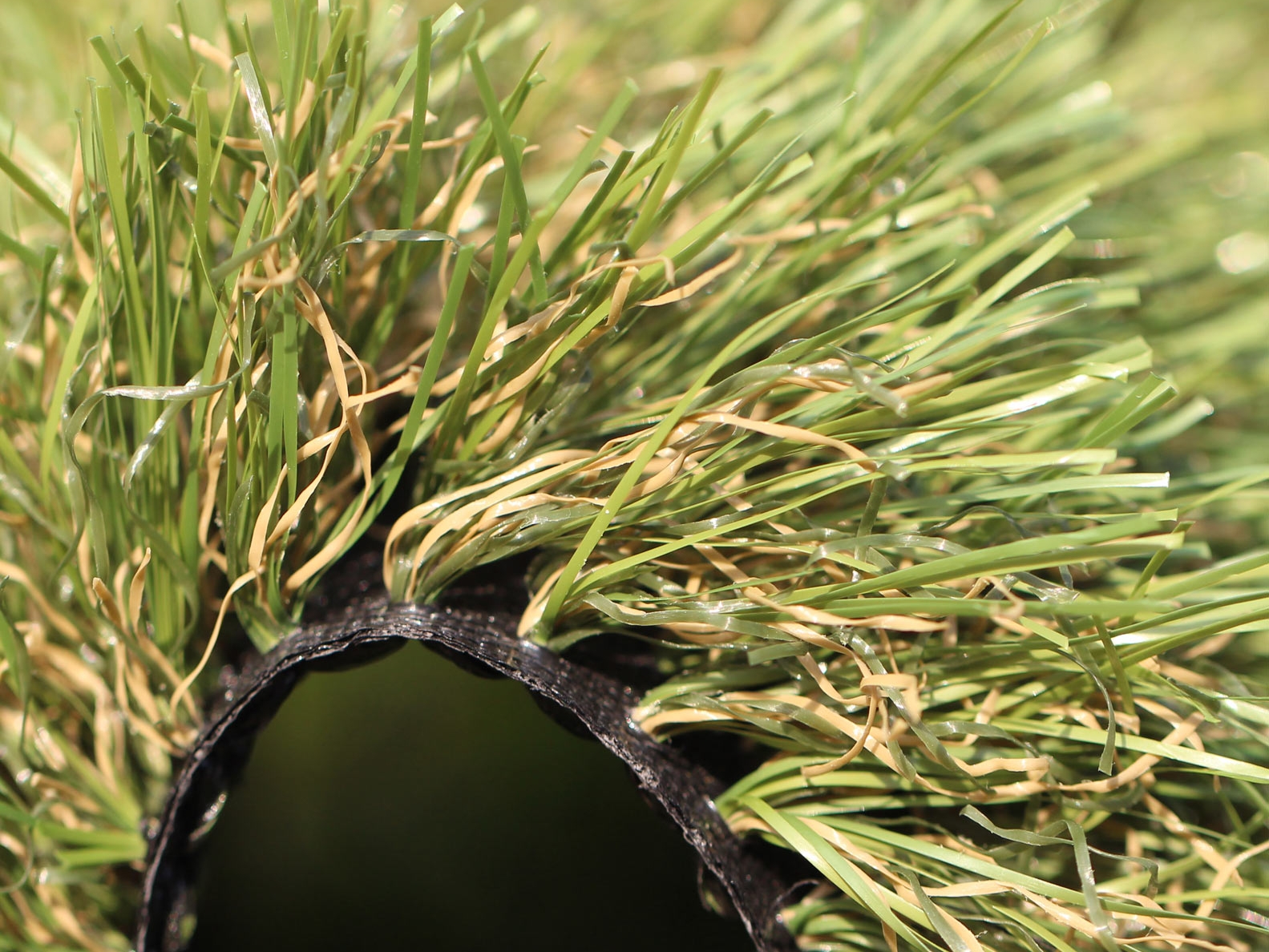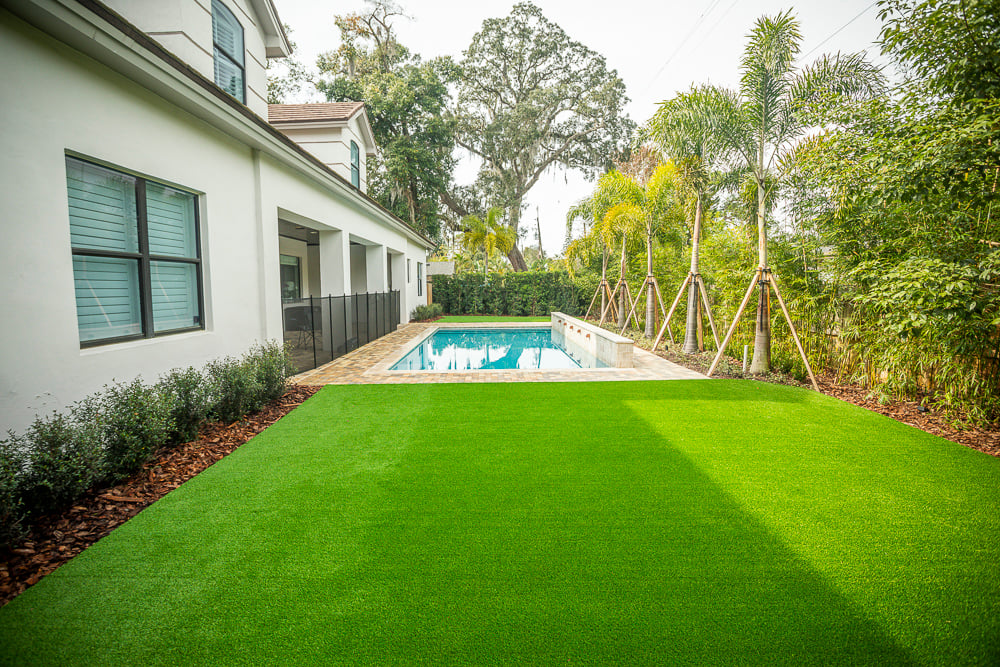Skilled Arizona Turf Installation Services for Residential and Business Use
Wiki Article
See Why Homeowners Prefer Artificial Turf for Sustainable Landscape Design Practices
As home owners progressively prioritize sustainability in landscape design, synthetic grass has actually become an engaging alternative to typical yard. Its capability to save water, decrease maintenance initiatives, and lessen ecological impact settings it as a practical choice for those seeking environmentally friendly solutions. In addition, the visual charm and convenience of fabricated grass accommodate diverse layout choices. The implications of this change prolong beyond simple benefit and aesthetics, motivating a closer exam of exactly how these choices affect broader ecological outcomes. What stays to be explored is the complete scope of benefits that artificial grass can offer to house owners and the environment alike.Water Preservation Conveniences
One of the most considerable advantages of fabricated turf is its role in water preservation. In comparison, fabricated grass removes this need totally, as it does not need watering.Furthermore, the installment of fabricated turf can add to an extra sustainable landscape. Home owners can substantially reduce their water expenses, enabling reallocation of sources to various other ecological campaigns or family usages. Furthermore, synthetic grass is created to withstand various climatic problems without the requirement for supplemental watering, making it an optimal option for areas facing water deficiency.
The environmental advantages prolong beyond instant water savings. By lowering water intake, synthetic grass helps to reduce the impacts of environment adjustment, preserving crucial ecosystems that are endangered by extreme water removal. As lasting landscaping practices gain grip, artificial lawn emerges as a responsible option for homeowners seeking to produce environmentally friendly outdoor rooms.
Reduced Upkeep Initiatives
Fabricated grass considerably minimizes upkeep initiatives contrasted to traditional grass lawns. With fabricated grass, home owners can get rid of the taxing jobs connected with all-natural landscape design, such as mowing, feeding, and weeding. This not only conserves beneficial time but also lowers physical labor, making grass care accessible for individuals of all ages.Among one of the most noteworthy benefits is the lack of routine mowing. Standard grass require regular cutting to keep an aesthetically pleasing height, whereas fabricated turf remains constantly lavish without the demand for cutting. Additionally, house owners no much longer require to apply fertilizers or pesticides, which are commonly called for to maintain natural grass healthy. This shift not only lightens the workload however additionally promotes a neater, more uniform appearance year-round.
In addition, man-made turf is resilient and long lasting, calling for very little upkeep beyond periodic cleaning and rinsing to remove debris. This convenience of upkeep enables property owners to enjoy their exterior areas without the continuous fear of maintenance, offering more time for recreation and household activities. Inevitably, the minimized maintenance initiatives related to synthetic grass make it an enticing choice for those seeking a low-maintenance, aesthetically appealing landscape.

Environmental Influence Decrease
There is an expanding recognition of the environmental benefits connected with man-made lawn, particularly in terms of water conservation and minimized chemical use. Typical grass call for significant amounts of water, especially in drought-prone regions, resulting in enhanced stress on regional water sources. On the other hand, synthetic grass removes the demand for watering, substantially reducing water intake and advertising sustainability.In addition, standard grass upkeep commonly includes the application of fertilizers, pesticides, and herbicides, which can add to soil and water pollution. Fabricated lawn alleviates this environmental risk by requiring marginal maintenance and essentially getting rid of the need for harmful chemicals. This not just improves soil wellness yet likewise protects neighborhood environments from hazardous runoff.
In addition, the manufacturing of natural yard yards generally involves making use of fossil fuels for trimming and landscaping equipment, more adding to greenhouse gas exhausts. By selecting synthetic grass, property owners can significantly decrease their carbon footprint linked with lawn treatment activities.
Visual Appeal and Convenience
Along with its environmental benefits, synthetic lawn offers considerable visual appeal and flexibility for landscape design. Property owners can accomplish a lavish, green appearance year-round, getting rid of the seasonal variations commonly related to all-natural lawn. This regular aesthetic not only improves the visual charm of a property but likewise contributes to a properly maintained and polished look.
Moreover, synthetic lawn is offered in a range of designs, structures, and shades, permitting modification to match specific choices and style styles - Arizona turf. Whether made use of in household yards, industrial areas, or recreational areas, it can flawlessly incorporate right into diverse landscaping layouts, from modern-day minimalist to lush exotic setups
The adaptability of man-made turf extends past simple appearance; it can be installed in numerous places, including roofs, outdoor patios, and even interior rooms, producing opportunities for one-of-a-kind landscape design services. Additionally, it is ideal for a series of activities, from youngsters's play areas to pet-friendly environments, supplying performance without compromising design.
Ultimately, the visual charm and versatility of fabricated grass make it an eye-catching choice for homeowners looking for sustainable landscape design solutions that do not give up charm for ecological responsibility.

Long-Term Cost Savings
One of the most compelling benefits of man-made grass is its potential for long-term price savings. Unlike all-natural yard, which calls for normal maintenance-- consisting of mowing, watering, feeding, and bug control-- synthetic turf significantly lowers these continuous expenses.In addition, synthetic grass has a life-span of 15 to 25 years, depending upon its quality and use. This useful source toughness reduces substitute expenses, making it a more cost-effective choice in the future. The preliminary financial investment in synthetic lawn can typically be redeemed through the financial savings accrued over time.
While the in advance price may seem greater contrasted to sod installment, the cumulative cost savings from lowered maintenance and water use often exceed these first expenditures. Eventually, the fostering of synthetic grass not just advertises a sustainable landscaping option yet also uses home owners a monetarily savvy choice that straightens with lasting budgeting goals.
Final Thought
Synthetic grass becomes a compelling option for sustainable landscaping, using substantial benefits in water conservation, reduced maintenance efforts, and reduced ecological influence. Its visual allure and versatility enhance the visual landscape while aligning with modern sustainability goals. Additionally, long-lasting expense savings contribute to its appearance for house owners. As neighborhoods progressively prioritize ecologically friendly practices, the adoption of artificial lawn stands for a dynamic action toward achieving resistant and lasting landscapes.Furthermore, artificial lawn is developed to withstand numerous climatic problems without the requirement read what he said for supplemental watering, making it an ideal option for regions encountering water scarcity. (Artificial turf companies phoenix)
Fabricated lawn arises as a compelling option for lasting landscape design, using considerable advantages in water preservation, minimized maintenance efforts, and lessened ecological useful content effect.
Report this wiki page